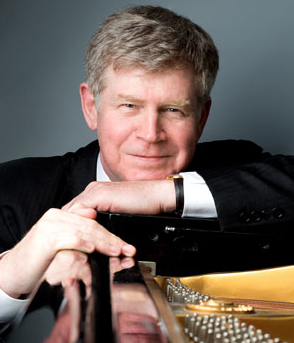SubCulture presents Ian Hobson: Sound Impressions: The Piano Music of Claude Debussy & Maurice Ravel- 6th in series
Ian Hobson, piano
SubCulture, New York, NY
April 18, 2018
Ian Hobson concluded his six-recital series of the complete solo piano music of Debussy and Ravel with his finest playing of the season. His customary technique did not fail him, but he added elements of dynamic control and total emotional involvement that rendered many moments simply breathtaking. I have reviewed the first, third, and fourth recitals previously in these pages, and I have been quite firm with Mr. Hobson because I believe “French is in the details,” but on this occasion, I had no reservations. The program consisted almost entirely of valedictory pieces, the last works of each composer, with one relatively early work by Debussy. The common threads: the only toccata by each composer, music inspired by wartime, and neo-Baroquism.
Mr. Hobson began with Debussy’s “updated Baroque” homage, the suite Pour le piano (1900/01), giving it one of the finest renditions I have ever heard live. The energy of the opening Prélude was fierce, and he respected the very long pedals requested by Debussy, which I have heard other pianists try to “neaten up,” thereby falsifying an important part of the color. Then came the Sarabande, a slight revision of an earlier work, redolent with the influence of Satie. Here Mr. Hobson became revelatory, with a mournful, dignified tempo and gorgeous chord balancing. Of course, his reliable nimble fingers gave us the perfect Toccata.
He followed this with two little-known Debussy gems from very late in his career: the haunted Élégie, a charity piece for a series on “Women and War,” and the Pièce pour l’oeuvre du “Vêtement du Blessé, written for the WWI relief organization, “Le Vêtement du Blessé” (The Dressing of the Wounded). Debussy, who was mortally ill with the cancer that would kill him and sick at heart with the violence of war, often wrote of the impossibility of composing music in such a time, yet he persisted. Both works were played with total sensitivity.
Mr. Hobson then presented Ravel’s final solo piano work, Le Tombeau de Couperin, a tombeau being a Baroque musical honoring of a departed colleague: here the pretext is not only Couperin, but the entire French eighteenth century, one of Ravel’s favorite idealized pasts. Ravel heightens the elegiac content with dedications to friends killed in World War I: one friend per movement, except the Rigaudon, which is dedicated to childhood friends of Ravel, Pierre and Pascal Gaudin, from Saint-Jean-de-Luz, killed by the same shell on November 12, 1914. It was their first day at the front. Their mother’s name syllabified, Ma-“rie Gau-din,” inspired the punning dedication of the Ri-gau-don. The Prélude spun its imitation harpsichord web with perfect delicacy and beautiful voicing. Hobson’s Fugue was a marvel of contrapuntal clarity (the only fugue in Ravel’s published oeuvre, its keyboard layout is confounding and awkward) and the ending vanished into heartbreaking silence. The Forlane and Rigaudon had great energy, with the middle section of the latter bringing the sense of loss firmly into our awareness. The Menuet was perfection, particularly in its final coda-like page that dissolves into a dissonant trill. Only in the Toccata (another awkward series of nightmare problems for the pianist to solve) was I aware of any slight technical struggle, yet Mr. Hobson’s unflagging momentum and his total emotional commitment made it the shattering yet triumphant ending it should always be. Ravel himself served in the war (enlisting at age 41), witnessing the horrors while driving a dilapidated truck; truly his fallen colleagues are transformed in this remarkable work. Their lives were not sacrificed in vain.
Mr. Hobson then played Debussy’s truly “last” work for solo piano, a barely-there two pages discovered in 2001, titled Les Soirs illumines par l’ardeur du charbon (Evenings lit by the glowing coal), ironically found among the possessions of a Parisian coal merchant who made sure that Debussy’s home stayed warm—there were such critical shortages of coal during World War I. The title is a line from Baudelaire’s Harmonie du soir, which Debussy had set as a song for voice and piano in 1887/89. The music browses freely from snippets of his earlier works of all periods and ends almost before it begins, which does not lessen its heavy air of nostalgia.
Mr. Hobson finished with what many consider the greatest set of Etudes since those of Chopin, Debussy’s two books of six each, containing fiendish technical challenges, all of which must stand in the service of the most sophisticated musical ideas. Each one was given the perfect treatment, just a few highlights: the fourths and sixths were magic, and the first five of book two were mesmerizing in their variety, all perfectly done. Debussy turned to the abstract as an escape from the hideous realities with which he had to deal, yet for those who listen intently, one can hear distant horn calls and barely suppressed violence even in these elegant works.
This was an immense achievement (I mean not only this recital but all six), and it brought the proper attention to a repertoire that, while “popular,” is not programmed often enough. Bravo, Ian, and come back soon.

